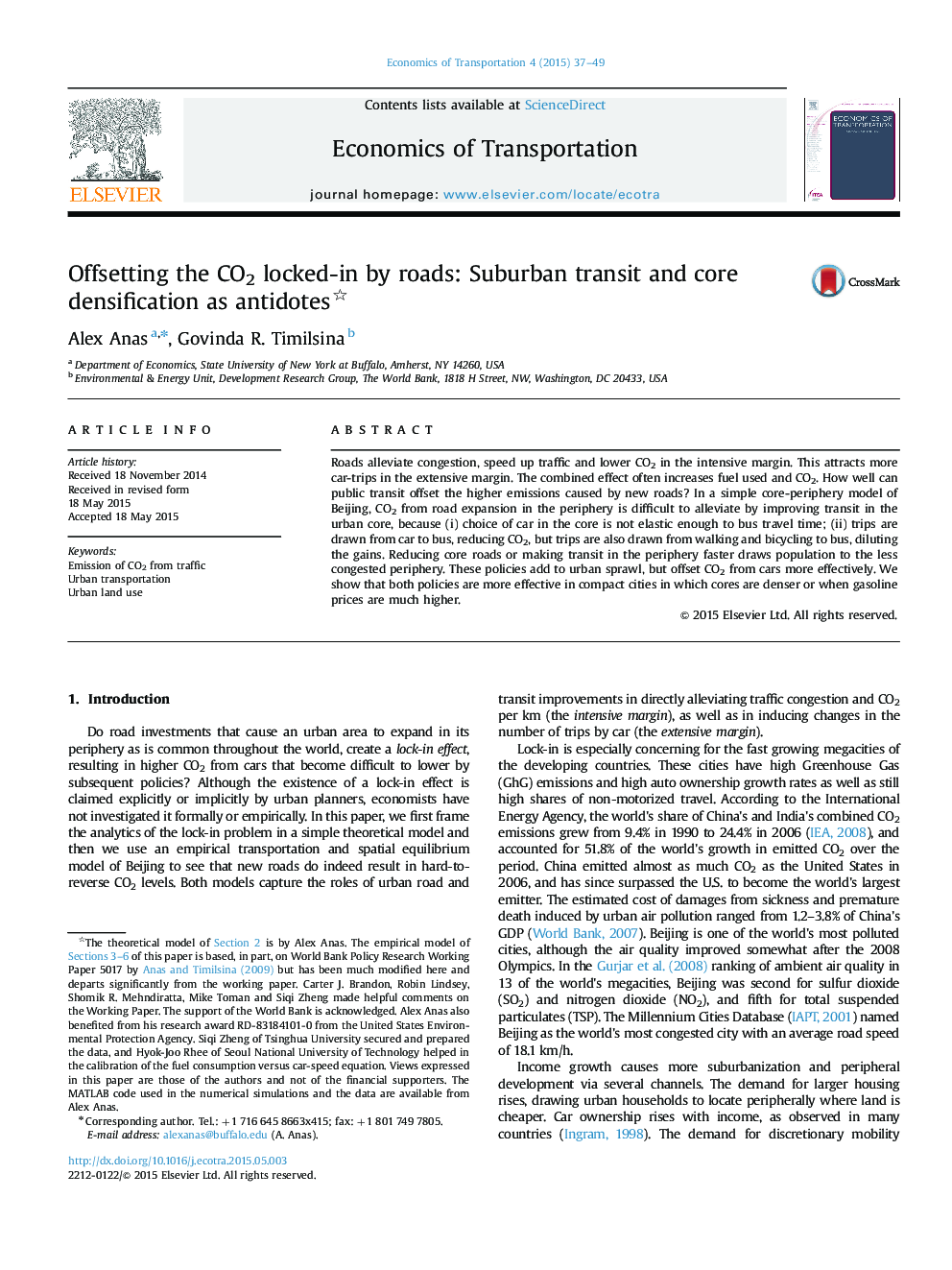| کد مقاله | کد نشریه | سال انتشار | مقاله انگلیسی | نسخه تمام متن |
|---|---|---|---|---|
| 5062934 | 1476654 | 2015 | 13 صفحه PDF | دانلود رایگان |

- The paper combines the logit model of mode choice, the flow model of congestion adapted to both cars and buses congesting each other, the speed-emissions relationship for traffic and the theory of spatial equilibrium.
- The effects of road expansion and public transit expansion on CO2 emissions can be analyzed.
- It is applied to a simple version of Beijing with five income groups, core and periphery and three modes: car, public transit (a combination of bus and rail transit), and walking.
- It is shown which kinds of policies about improving public transit are effective in reducing emissions from road expansion in the suburbs.
Roads alleviate congestion, speed up traffic and lower CO2 in the intensive margin. This attracts more car-trips in the extensive margin. The combined effect often increases fuel used and CO2. How well can public transit offset the higher emissions caused by new roads? In a simple core-periphery model of Beijing, CO2 from road expansion in the periphery is difficult to alleviate by improving transit in the urban core, because (i) choice of car in the core is not elastic enough to bus travel time; (ii) trips are drawn from car to bus, reducing CO2, but trips are also drawn from walking and bicycling to bus, diluting the gains. Reducing core roads or making transit in the periphery faster draws population to the less congested periphery. These policies add to urban sprawl, but offset CO2 from cars more effectively. We show that both policies are more effective in compact cities in which cores are denser or when gasoline prices are much higher.
Journal: Economics of Transportation - Volume 4, Issues 1â2, MarchâJune 2015, Pages 37-49